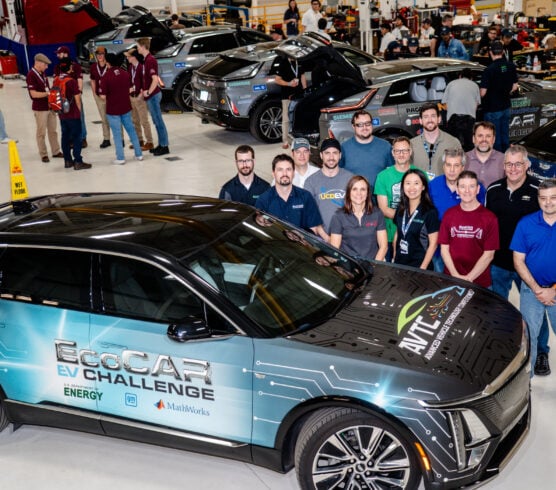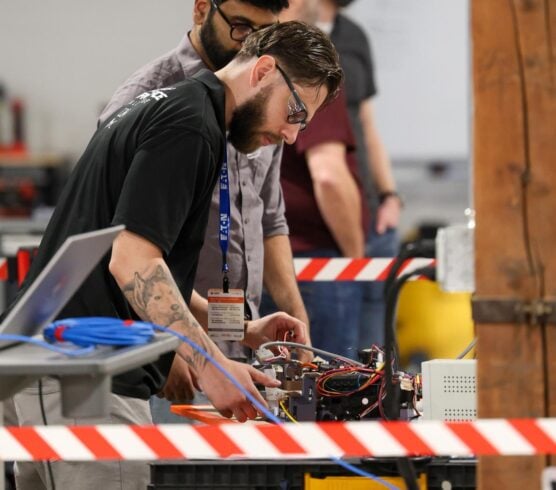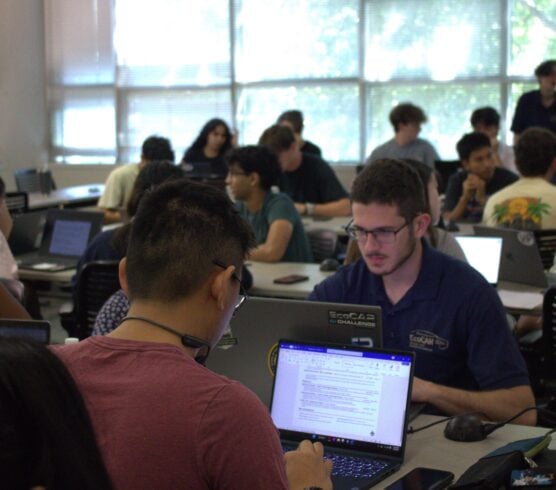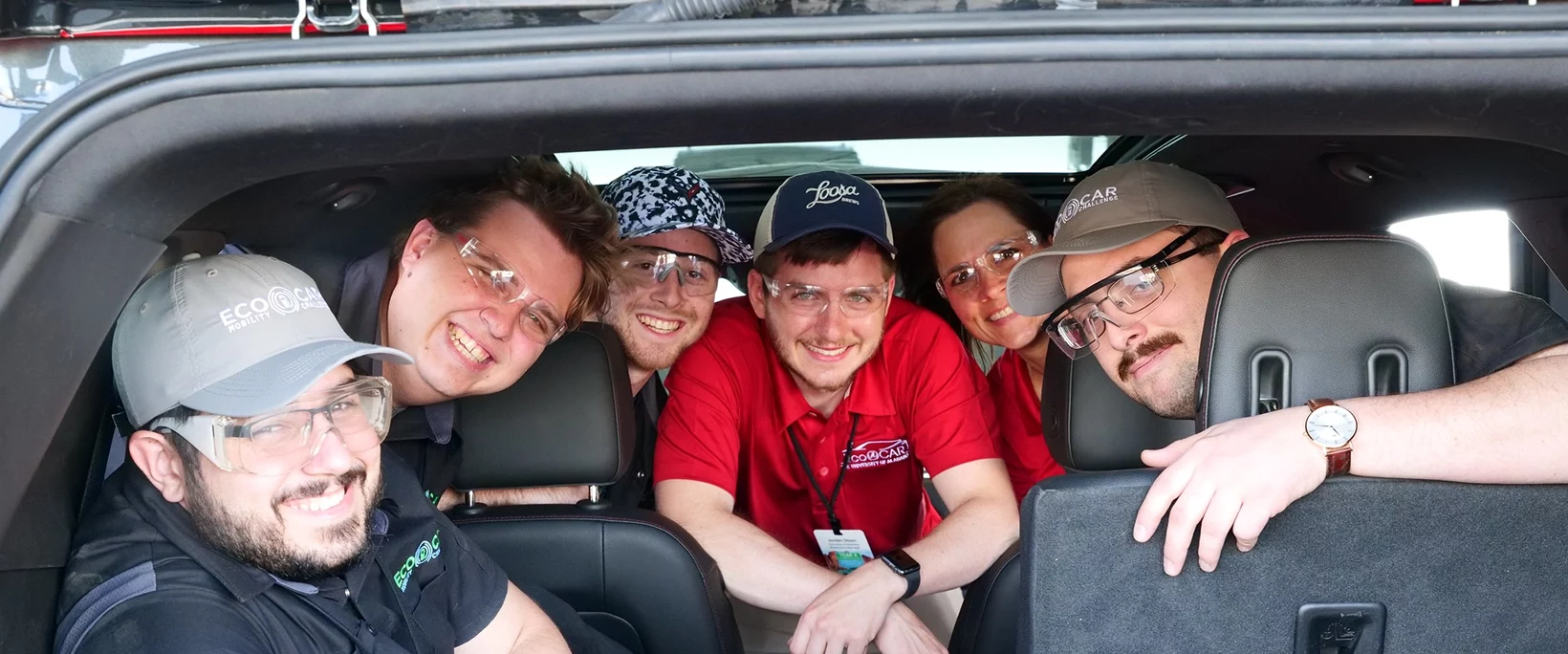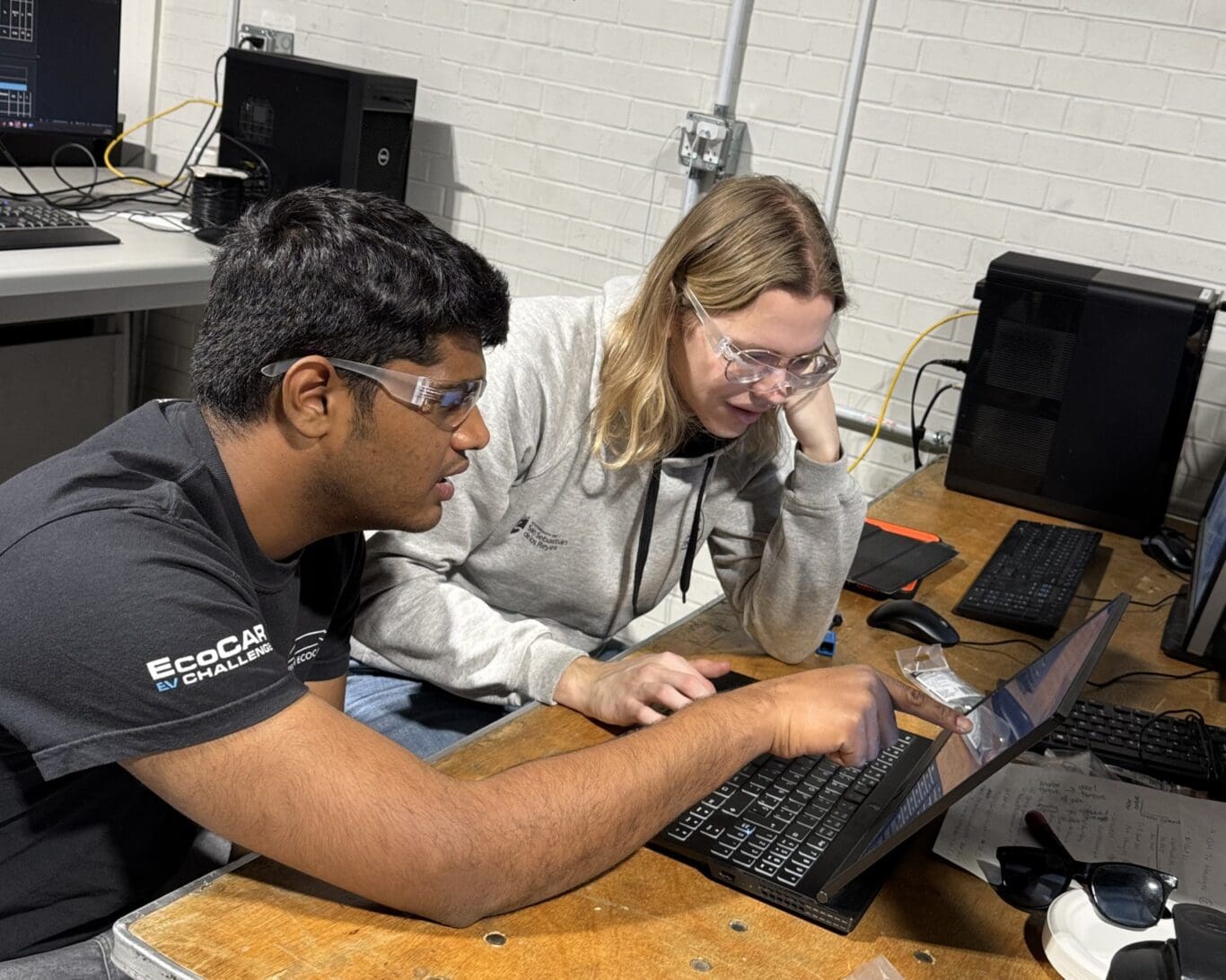
Written by: Antonia Martinez, Faith Busche, Nicolas Etchegaray, and Kelly Hitchcock
The Illinois Tech EcoCAR team has made many improvements throughout Year 3, achieving milestones in vehicle progress and collaborating closely with our sponsors and mentors. Here’s a look at our notable accomplishments across various sub-teams.
Connected and Automated Vehicles (CAV) Sub-Team
The CAV sub-team has been working hard to develop various Advanced Driver Assistance Systems (ADAS) features that are set to be deployed to the vehicle by the end of Year 3. Most recently, the team has been able to successfully complete the last phase of Hardware-in-the-Loop (HIL) testing for the Adaptive Cruise Control (ACC) feature. This testing process is the last step before deploying ACC to the vehicle for on-vehicle testing within a closed test track. The team’s General Motors (GM) mentor has been key in helping the team improve the performance of this feature through calibration.
In parallel to ACC development, the team has been working hard to advance both the Lane Centering Control (LCC) feature as well as the Automatic Intersection Navigation (AIN) feature prior to their time at Winter Workshop in Riverside, California. While these features are still in the development phase, they were able to receive feedback on both from subject matter experts at the workshop. Experts from Argonne National Laboratory have provided the team with new signal, phase, and timing (SPaT) data that will be instrumental in setting up realistic testing scenarios for navigating through intersections. The team’s AIN feature is set to utilize Vehicle-to-Everything (V2X) connectivity to efficiently make decisions at these intersections and will be testing their vehicle’s ability to safely do so at GM’s Desert Proving Grounds in Yuma, AZ next week.
To deploy these features to the vehicle, the CAV team has been working closely with mentors from dSPACE to complete command actuation. This would develop the framework for sending commands from CAV features to the rest of the vehicle for acceleration requests, steering angle commands, and braking commands. The dSPACE team has provided valuable knowledge on the RTMaps software being used by the CAV Supervisory Controller, the AUTERA Autobox. This guidance has helped the team to work through challenges in correctly compiling the parts of each message the CAV team will be sending.
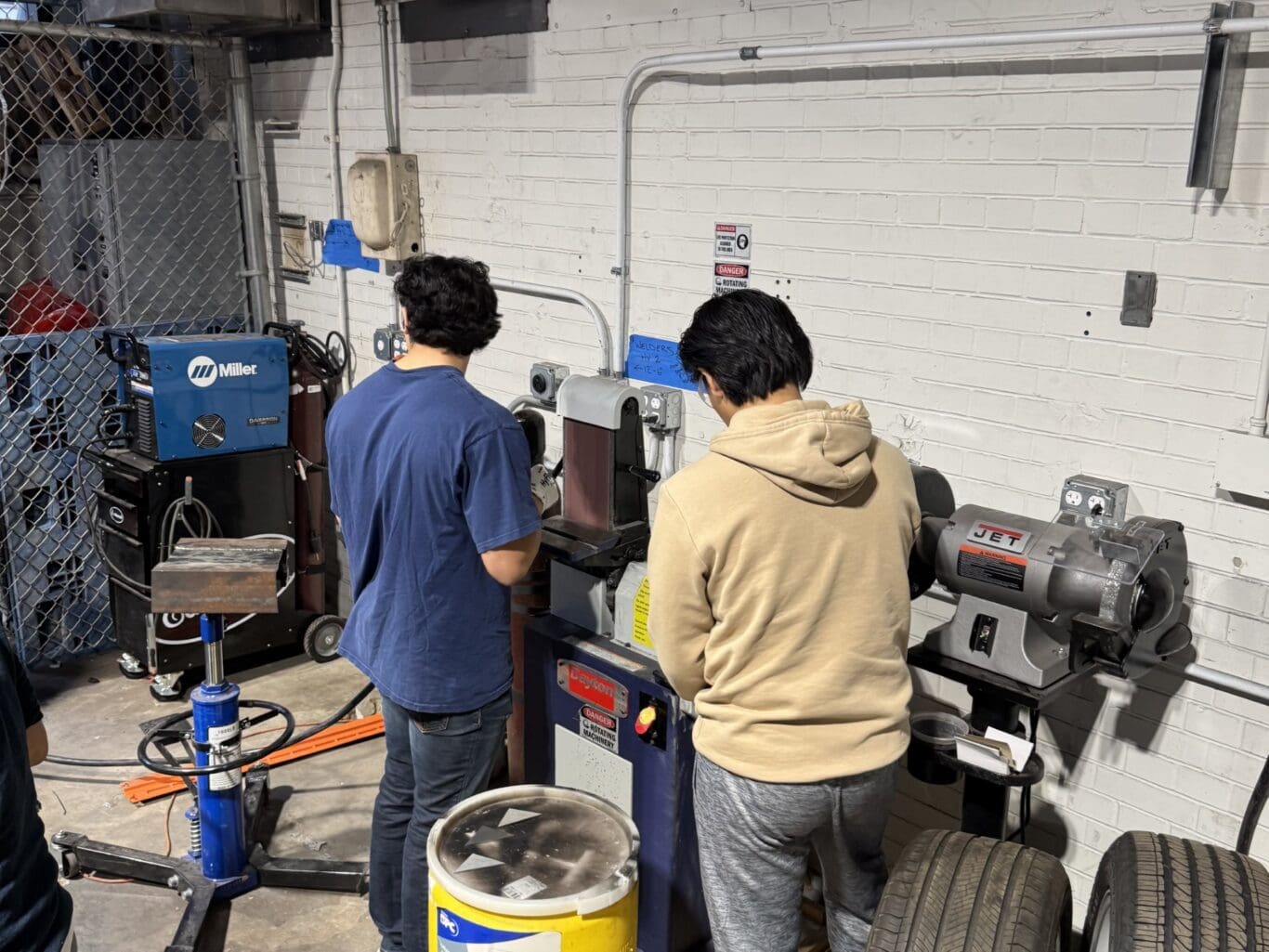
Propulsion, Controls, and Modeling (PCM) Sub-Team
The PCM sub-team has been dedicated to getting the motor to spin and enhancing the calibration guide to optimize vehicle performance. Magna has been instrumental to sourcing the team with a new motor to ensure the team is ready with a running vehicle for competition. While working to acquire a new motor, Magna has been an invaluable partner in developing its control systems. They have assisted in verifying the code sent to the motor and contributed to the development of the pedal map for the torque path.
MathWorks has been key in assisting the PCM sub-team with setting up the HIL system on the Performance Unit, greatly advancing development. They have also played a key role in improving the controller, troubleshooting issues during model deployment to the vehicle, and helping create A2L files for calibration.
Argonne National Laboratory’s PCM organizer, David Ord, has been an invaluable resource, providing guidance on controller development and addressing competition-related questions. They have also played a key role in facilitating seamless communication with Magna, ensuring the team receives the necessary support and resources.
Software Design Integration (SDI) Sub-Team
The SDI sub-team has transitioned from focusing on vehicle integration to learning the fundamentals of feature calibration. While a few members have continued finalizing vehicle adjustments and refining the visual integration of new components, most of the team is now training to become vehicle test engineers, preparing to support PCM and CAV feature testing.
The two main features that the team is preparing to calibrate first will be the torque generation feature for the PCM sub-team and ACC for the CAV sub-team. The torque generation feature will be calibrated using CANape software. Altec sponsors have been extremely helpful in providing thorough training to the team on this Vector software. For calibrating the ACC feature for the CAV team, the SDI team has been learning about calibration methods in RTMaps from some of our dSPACE mentors.
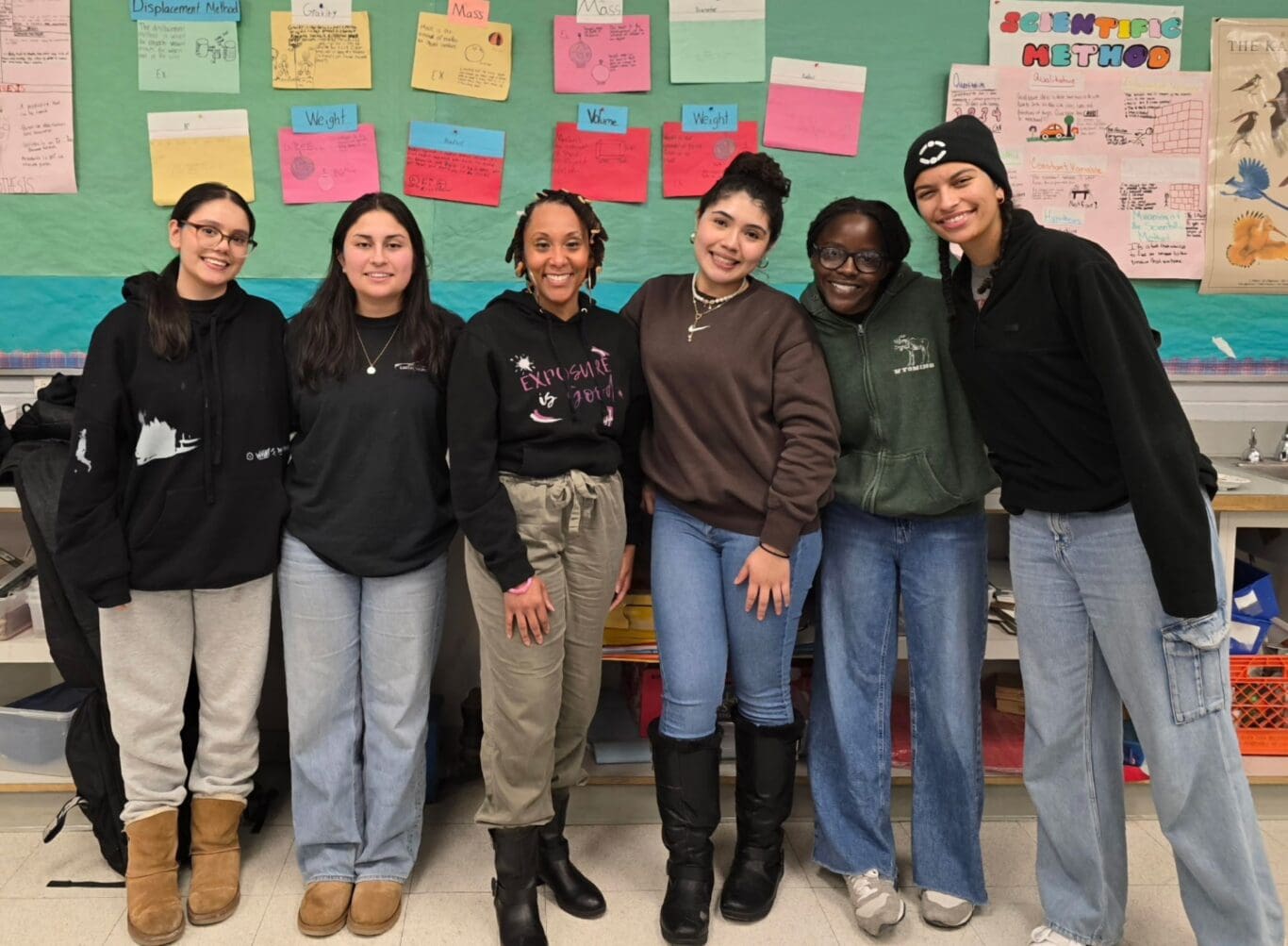
Mobility Challenge Sub-Team
The Mobility Challenge sub-team has maintained strong collaboration with our Community-Based Organization (CBO). After gathering feedback during multiple meetings, the team has finalized their design and is beginning building the prototype.
Communications Sub-Team
The Communications sub-team has been dedicated to engaging with our youth audiences through impactful outreach initiatives. Partnering with Building Bridges, the team has volunteered at various events, including an MSI tabling event and a mentorship opportunity. Additionally, they hosted a successful coding workshop as part of their youth engagement efforts.
Year 3 has been a transformative period for the Illinois Tech EcoCAR team, and we’re excited to carry this momentum forward. Stay tuned for further updates as we continue to drive innovation!
